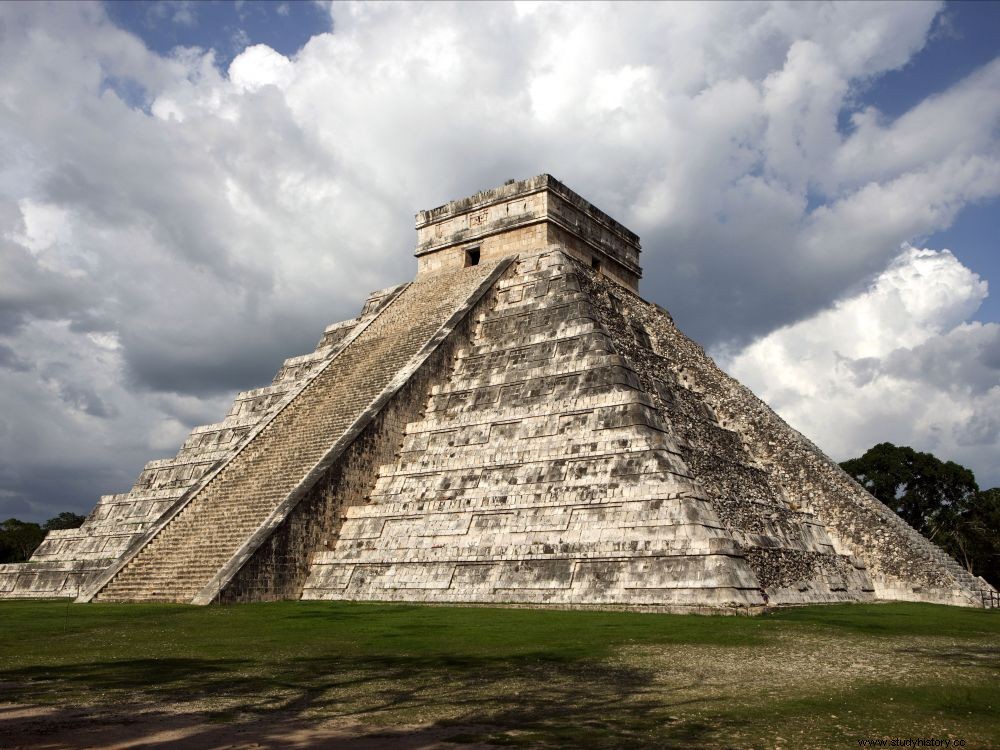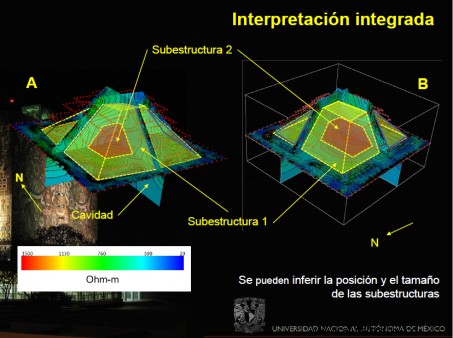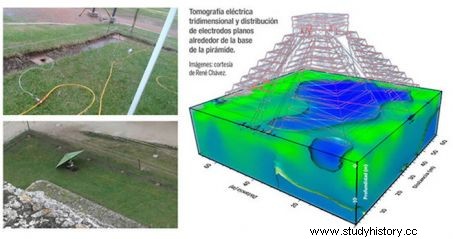An unknown structure identified at the heart of the Pyramid of Kukulkan, also known as El Castillo, at the Maya site of Chichen Itza, Mexico.

A new structure identified at the heart of the pyramid of El Castillo, at the Mayan site of Chichen Itza, Mexico.
A monument assembled like a Russian doll! The imposing pyramid of Kukulkan, at the archaeological site of Chichen Itza (Mexico), one of the great Mayan ceremonial centers of the Yucatan Peninsula, concealed a secret that technology has just unveiled:two constructions nested one inside the other, encapsulated in the current 12th-century pyramid, intended to honor the serpent-god Kukulkan.

Two interlocking structures have been detected deep within the Pyramid of Kukulkan, also known as El Castillo. Credit:UNAM
Mexican archaeologists used a non-invasive imaging technique - called 3D electrical resistivity tomography (ERT) - used by geophysicists to study underground. It reconstructs volumes from a series of electrical pulses sent to electrodes; Mexican specialists were able to detect the presence of these two nested substructures "in the heart of the monument “, explains Denisse Lorenia Argote Espino, archaeologist at the Prospecting Laboratory of the National Institute of Archeology and History (INAH), in Mexico City. The first is a 10 meter high pyramid surmounted by what could be a temple. It rests on the ground on a base of 12 m by 18 m, slightly offset from the center of the pyramid. A small access staircase was also located there. "This building is coated by a second 20m high continues the specialist. A third stage would have finally made it possible to erect the pyramid of El Castillo - the name given to it by the Spaniards in the 16th century - as we admire it today with its 30 meters high. According to experts, the primitive shrine was the work, between 500 and 800 CE, of the ancient Maya, the cultural group behind the founding of Chichen Itza. Before arriving in the region, at the end of the 7th century, populations called Toltecs, from central Mexico. They are the ones who would be the builders of the second structure between 800 and 1000. The current pyramid would have been erected a little later, between 1050 and 1300.

Electrical tomography. Discovery in 2015 of the presence of a cenote,…
This isn't the first time El Castillo has revealed surprises. In 2015, Mexican archaeologists discovered that the Mayan monument had been built just above a cenote (a sinkhole partially filled with water), a kind of natural formation several tens of meters deep, common in the karstic formations of the Yucatan Peninsula. Wells generally intended for human sacrifices. The uniqueness of this pyramid, which attracts hundreds of thousands of visitors each year, is the spectacle it offers. El Castillo is indeed crowned by a temple, whose 365 steps and 52 panels, prove the obvious links with the cycles of time. Thus, at the equinoxes, a few hours before sunset, a play of shadow and light along the central access ramp would evoke in its undulating effects the descent of the feathered serpent Kukulkan gliding towards the ground. The researchers plan to reach the original internal structure next year to carry out excavations.
